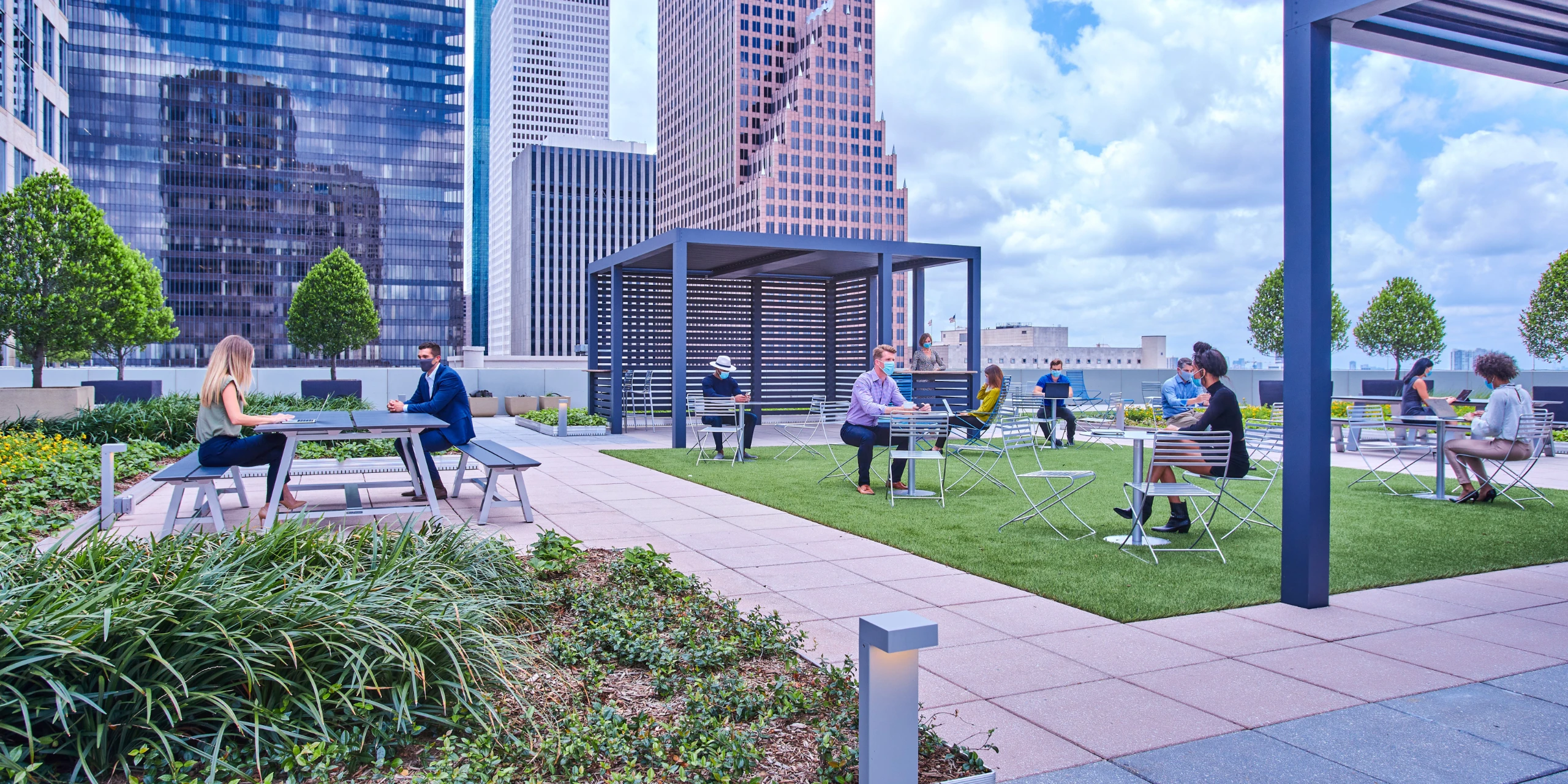Are Flexible Offices the Solution to Complex CRE Needs?
The future of work was already evolving well before the pandemic. Remote work and work-from-home days were becoming more standard in many industries, and companies saw the positive impacts of such flexibility on both their bottom lines and their employees’ attitudes.
Now, health, safety, and social distancing measures have made it critical for most industries to keep up with an ever-changing landscape and continue advancing what work and workspaces can look like. For many organizations, remote work has become a permanent option.
At the same time, this shift has impacted the demand for office space — which means that the commercial real estate (CRE) industry’s supply chain needs to adjust accordingly.
Right now, just a small portion of global office markets are also flexible workspaces (also known as flex office space or coworking). But this is where the future lies for tenants and brokers, and many believe it could comprise up to 30% of the market in the next 5 years.
How are CRE needs changing?
Flexible office space solutions have been increasing in demand for the past 10 years; 2020 just expedited the transition to flexible workspaces.
To keep up with changing tenant desires, the CRE industry must reevaluate its own needs and offerings. Overall, this means diversifying portfolios, in addition to providing:
- Shorter leases. These days, people are much less likely to sign long contracts. They opt for flex office space that can quickly adjust to their needs and organizational changes.
- More flexibility. With hybrid work models, people may only be coming in part of the week. Or, they might require conference rooms one day, and a private booth the next. Perhaps they’re looking to rent offices just for a few weeks. Having and paying for empty space isn’t something companies want to do, and more flexibility is a needed amenity.
- Scalability. Organizations want the option to grow, or to scale down, with minimal financial risk.
- Offices close to home. When remote work is an option, tenants aren’t as willing to commute; they want office space close to home.
Flexible workspaces in 2021
The pandemic heavily impacted the CRE industry, particularly affecting coworking and office spaces. But flexibility remains top priority for workers nonetheless: In fact, after initial lockdowns, coworking appears to be the new normal, and the preferable workspace solution for many.
In fact, research shows that 43% of workers say they’d consider working from a company-provided location nearer to their home at least a few times a week, and 67% of CRE decision-makers are increasing workplace mobility programs and incorporating flexible office space as a central element of their work strategies.
It’s clear that a more hybrid work model that offers adjustable terms and lease options is in demand: 86% of major organizations anticipate using flex office space as a key part of their real estate strategies going forward, and 82% say they’ll favor buildings that include flex offerings. Houston, for one, is one of the top growing cities for flexible workspaces, at 14.6% over the last year.
How can flex office space benefit my clients?
For clients, there are many benefits to having a flexible workspace, including:
- Move-in ready space. Tenants don’t have to worry about the usual hassles that come with moving into a new space. Things like setting up amenities and utilities, and furnishing their space are already taken care of.
- Lower costs. Flexible office spaces appeal to leadership, as they can cut real estate costs and save revenue for areas where it’s really needed.
- Multipurpose spaces. Offering a variety of spaces — like coffee spots, wellness rooms, rooftop terraces, and different types of meeting areas, in addition to more traditional offices and conference rooms — accommodates the diverse needs of workers. In turn, it also improves the tenant experience, increases productivity, and encourages engagement, while giving leadership the breathing room of not paying for empty space.
- Offices close to home. Remote workers are less likely or willing to commute, so a flex office space close to home provides better security and safety, and offers more flexibility with their work schedules and personal lives.
- Flexible leases and scalability. Business is in flux for many types of workers and industries these days, and adjustable leases are preferred over the uncertainties of a long-term commitment. Options to scale up or down within the same space offloads a huge burden on leadership.
- One broker as business changes. Flexible workspaces promote growth, so a CRE broker with multiple solutions means outgrowing a space isn’t a problem, and a client can keep coming back to someone they trust.
Conclusion
Flexible workspaces provide many benefits that, ultimately, give organizations and their workers the control they need and want over their space.
Having a partner like The Square ensures you have flex office space options for everyone from a single person to an enterprise company. Even better, as The Square is managed by Hines, you can ensure that you can meet your clients where they’re at and provide an option from a company you trust.
If you’re looking for maximum workspace flexibility, discover The Square by Hines. Contact us to book a tour.
